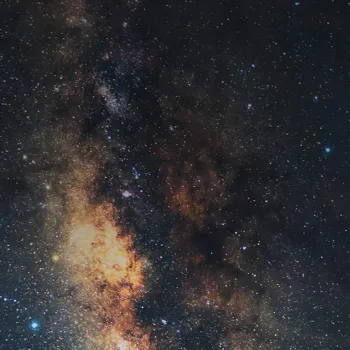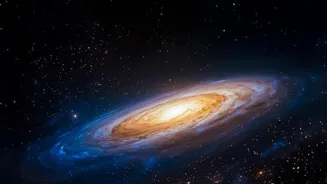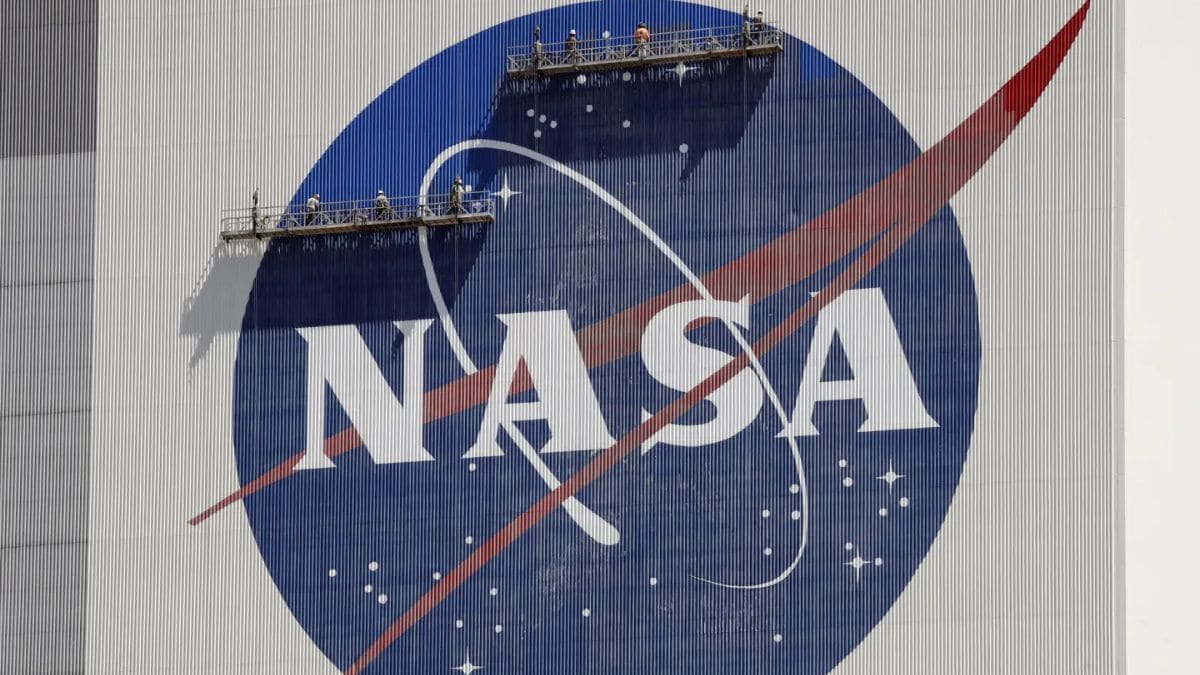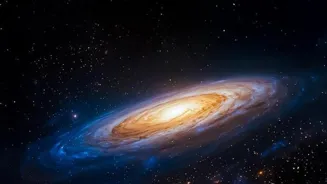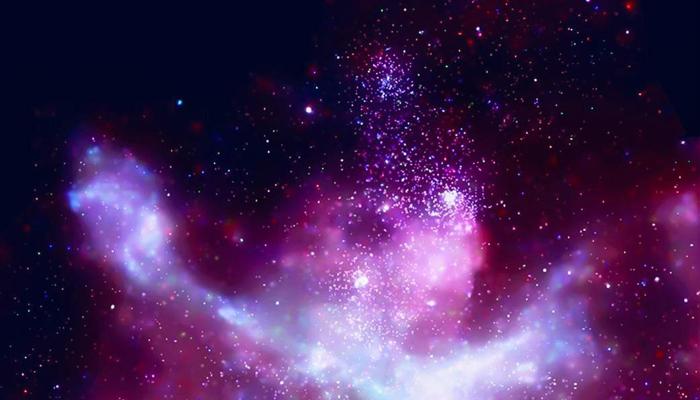Unveiling the Mysteries of the Milky Way: A Cosmic Odyssey Awaits! Discover 7 mind-blowing facts about our galaxy
Namaste, space enthusiasts! Our very own galaxy, the Milky Way, a swirling island of billions
of stars, is a cosmic wonder right above us. While we see it as a faint band of light in the night sky, there's a whole universe (literally!) to uncover about its secrets.
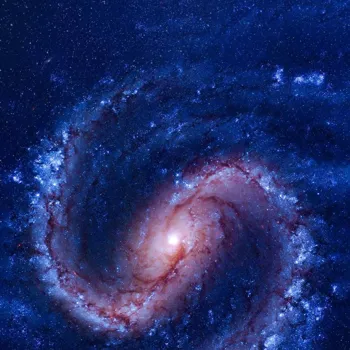
Buckle up, because we're about to embark on a journey to explore 7 astounding facts about our galaxy that will surely leave you star-struck!
Milky Way is a warped spiral galaxy with rippled disc and stellar streams
For decades, we've visualised the Milky Way as a classic spiral galaxy, with arms gracefully curving outwards from a central bulge. Textbooks often depict this neat, symmetrical structure. But recent observations have revealed a much more complex picture. It's not as simple as we imagined.
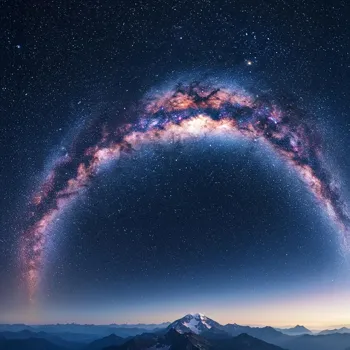
Imagine a cosmic pancake – that's the basic disc shape. But this "pancake" isn't perfectly flat. There's a warp at the edges, like a slightly bent vinyl record. A team of researchers, after studying the positions of many stars, discovered that the Milky Way’s disc is also rippled.
It’s more of a warped spiral galaxy than a flat one, affected by interactions with smaller galaxies that tug on the outer edges. This interaction gives our galaxy it's unique shapeshifting nature.
Another element is the presence of "stellar streams," remnants of smaller galaxies torn apart by the Milky Way's gravity. These streams weave around the main disc, providing us insight into the galaxy's cannibalistic past.
This adds another layer of complexity to our understanding of the Milky Way's structure.
Supermassive black hole Sagittarius A orchestrates cosmic dance
At the heart of the Milky Way lurks a behemoth – a supermassive black hole known as Sagittarius A (pronounced "Sagittarius A-star"). Don't let the name fool you, it's not a star!
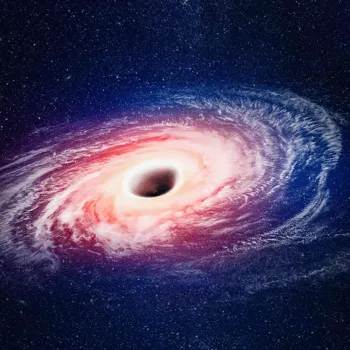
This cosmic vacuum cleaner has a mass equivalent to about 4 million Suns, all crammed into a space smaller than our solar system. Its gravity is so intense that nothing, not even light, can escape its grasp.
While black holes are usually portrayed as destructive entities, Sagittarius A also plays a crucial role in regulating the dynamics of the galactic centre. It’s not actively "gulping" down stars at an alarming rate like some other supermassive black holes in other galaxies.
Instead, it primarily controls the movement of stars and gas clouds in its vicinity. It’s like a powerful conductor orchestrating a cosmic dance. In 2022, scientists released the first-ever image of Sagittarius A*, pieced together from radio wave observations.
The image showed a bright ring of light surrounding a dark central region, a powerful visual confirmation of a black hole’s existence.
The Milky Way devours galaxies, leaving stellar streams as leftovers
Our seemingly peaceful galaxy has a dark secret: it’s a galactic cannibal! Over billions of years, the Milky Way has devoured smaller galaxies that strayed too close. Evidence of this cosmic buffet lies in the form of stellar streams.
These streams of stars are the remnants of dwarf galaxies torn apart by the Milky Way's immense gravitational pull. Think of them as the leftovers from a cosmic meal. The Milky Way is still actively consuming galaxies.
The Large Magellanic Cloud, a dwarf galaxy visible from the Southern Hemisphere, is currently on a collision course with our own. It is believed that this collision will occur in a few billion years.
The study of stellar streams provides valuable insight into the past interactions and growth history of the Milky Way. Each stream is a fossil, offering clues to the size, shape, and composition of the galaxies devoured long ago.
This process contributes to the ongoing evolution and changes shaping the Milky Way as we know it today.
Scientists propose Galactic Habitable Zone for life in Milky Way
While the Milky Way is vast, not all locations within it are equally hospitable for life. Scientists have proposed the concept of a "Galactic Habitable Zone" – a region where conditions may be favorable.
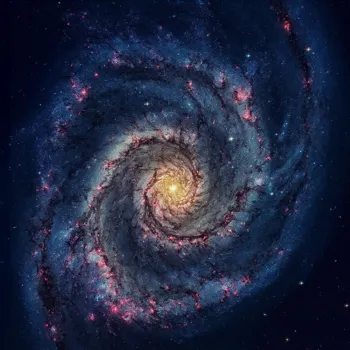
This region is characterized by a variety of factors, including the presence of heavy elements, the absence of frequent supernova explosions, and the right levels of radiation.
The Galactic Habitable area is not precisely defined, but is generally thought to be a ring-shaped area located at an intermediate distance from the galactic center. It should not be too close to the center to avoid dangerous radiation.
Also you should not be too far away to be lacking in the heavy elements like carbon, oxygen, and others needed to form planets and life. The existence of a Galactic Habitable Zone increases the probability of finding life beyond Earth.
It focuses the search on regions where the conditions are more likely to be conducive to the development of habitable planets. However, it’s important to remember that habitability does not guarantee the presence of life.
Rogue planets: mysterious wanderers in interstellar space
Not all planets are stuck orbiting a star. Some are wanderers called "rogue planets," drifting through interstellar space. These objects were originally formed around stars, but were ejected due to gravitational interactions with other planets or stars.
Rogue Planets are difficult to locate, as they do not emit light of their own and are only visible when they pass in front of a background star. However, researchers have identified a lot of rogue planets in the Milky Way. How many rogue planets are there?
Some calculations have said that there are many more rogue planets than there are stars in the Milky Way. These planets are a lot and they contain many mysteries. Some scientists calculate that they are habitable. And how?
Some might have a thick atmosphere that traps heat that remains from when they were orbiting a star. Some may even contain liquid water oceans beneath thick layers of ice. Could life exist on these starless wanderers or on these orphan planets? This is something we need to explore.
Astronomers may have recently found out the Milky Way isn't the galaxy that everybody sees it as. According to the European Space Agency, the Milky Way could weigh 550 billion times more than the sun. While this may seem like a lot, comparing the Milky Way against other galaxies puts this number lower. This number puts the Milky Way galaxy closer in weight and size to the Andromeda galaxy. Before the announcement, scientists believed that the Milky Way had a lot more dark matter, but the evidence showed otherwise. With a deeper understanding of our position in the galaxy, scientists are trying to get a hold of more data. Hopefully, soon we are able to study our galaxy even better!
These are just a few of the mind-boggling facts about the Milky Way galaxy. As we continue to explore the cosmos with ever-advancing technology, we will definitely uncover even more surprises and revelations about our home in the universe! Keep looking up, and keep wondering!
